Computer Components
Computer Memory
Computer Network
Computer Virus
Number Systems
Shortcut Keys
Terms
- What is a Browser
- Google Chrome
- Mozilla Firefox
- Internet Explorer
- Windows
- Computer Ports
- program
- Printers
- Microphone
- Monitor
- Motherboard
- Incognito Mode
- Mouse
- Memory Card
- CD
- ID
- ISO
- character
- server
- Keyboard
- Remote
- webcam
- Data
- URL
- keypad
- hub
- File
- Bytes
- Exabyte
- Gb
- Kilobyte
- Megabyte
- Petabyte
- Terabyte
- What is HDD
- What is SSD
- Memory vs Storage
- Non-volatile memory
- What is M.2 SSD
- How To Reboot A Computer
- Multi-Level Cell
- NAND Flash Memory
- What is the lock screen
- Block Storage
- Universal Serial Bus
- VRAM
- Cloud Hosting
- CompactFlash card
- What is WAP
- Classification of Memory
- Hardware vs Software
- Uses of Computer
- Uses of Internet
- Abacus
- Best Proxy Servers
- SSL VS. TLS
- Web Console
- GPU
- Difference Between LAN and WAN
- SSD and HDD
- Computer
- Data Migration
- JEDEC
- MLC vs. TLC vs. SLC NAND Flash
- VirtualBox Installation
- Num Lock
- PC
- MAC
- Continuous Data Protection
- Persistent Storage
- What is Bit
- Software Definition
- What is a File System
- When was the first computer invented
- How many generations of the computer
- Minicomputer
- Fourth Generation of Computer
- What is a Username
- What is ALU
Questions
When was the first computer invented
There are several classifications of the computer that create confusion; there is no easy to find the answer to the first computer invention. In 1822, Charles Babbage created the first mechanical computer, which was not really considered to resemble the used computer today. Therefore, the description is below that explains the invention of the first computer.
When was first used the "computer" word?
In 1613, the word computer was used for the first time by Richard Braithwaite in the book named The Yong Mans Gleanings. Until the 19th century, the definition of a computer was the same, when the industrial revolution created the machines. These machines had the main purpose of calculating.
The concept of first mechanical computer
In 1822, the first automatic computing machine was designed and developed by Charles Babbage, which was the Difference Engine. It had the ability to calculate numerous sets of numbers and generating hard copies of the results. Ada Lovelace helped the Babbage to developed the Difference Engine. The first computer by Babbage is considered the programmer, and he also wrote notes and sketches about the Difference Engine. Inappropriately, Babbage was unable to complete a full-portion functional type of this machine, as he had no sufficient fund. Later the Difference Engine No 2 was completed by the London Science Museum in June 1991. Later the printing mechanism was also completed by the London Science Museum.
In 1837, the Analytical Engine that was the first general mechanical computer, was proposed by Charles Babbage. It was the first general-purpose computer concept, which contained basic flow control, Arithmetic Logic Unit (ALU), integrated memory, etc. Unfortunately, due to less funding, Charles Babbage also was unable to build this computer while he was alive. Henry Babbage (Charles Babbage's youngest son) completed this computer and performed basic calculations too.
The concept of first programmable computer
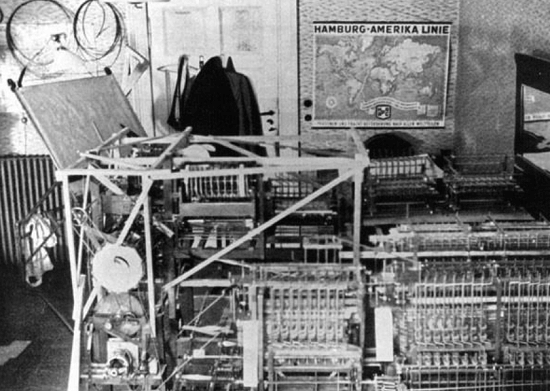
In mid-1936 and 1938, German Konrad Zuse created the Z1 in his parents' living room. It was the first really functional modern computer and also considered the first electromechanical binary programmable computer.
The concept of first modern computer
In 1936, Alan Turing first proposed the Turing machine and became the basis for computing and computers. The Turing machine was able to print symbols in a manner that simulates a person following a sequence of logical instructions.
The first electric programmable computer
Tommy Flowers developed the first electric programmable computer that was known as Colossus, and in 1943, it was demonstrated for the first time. It was developed to help for reading encrypted German messages of the British code breakers.
The concept of first digital computer
In 1937, the ABC (Atanasoff-Berry Computer) was started to develop by John Vincent Atanasoff and graduate student Cliff Berry, which stands for. Although the ABC computer was continuing in the development phase at the Iowa State College in 1937, later continued at Iowa State University until 1942.
More than 300 vacuum tubes were used by the Atanasoff-Berry Computer for digital computation. It had no CPU as it was not able to programming. On 19 October 1973, it was declared by US Federal Judge Earl R. Larson that the ENIAC patent by John Mauchly and J. Presper Eckert was invalid.
In 1943, at the University of Pennsylvania, John Mauchly and J. Presper Eckert started to invent the ENIAC, and it was continuing in the development phase but not completed until 1946. It used about 18,000 vacuum tubes and occupied about 1,800 square feet, weighing almost 50 tons. The first digital computer, the ENIAC is still considered by many people as it was fully functional. But, according to the judge ruled, the first digital computer was ABC computer.
The concept of first stored-program computer
In 1948, the SSEM (Small-Scale Experimental Machine), also known as the Manchester Baby or Baby, was introduced. Frederic Williams designed it, and with the assistance of Geoff Tootill, Tom Kilburn (his protégée) built it at the University of Manchester in England. The first electronically-stored program that was able to electronically store and execute a program written by Kilburn, which can calculate the highest proper factor of an integer with the help of repeated subtraction instead of division. On 21 June 1948, Kilburn's program was executed.
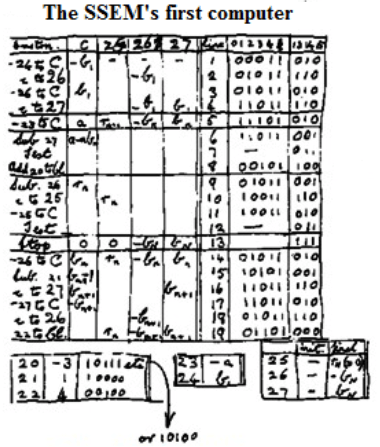
In England, at the University of Cambridge Mathematical Laboratory, the EDSAC was designed and built by Maurice Wilkes, which was the second stored-program computer. It performed its first calculation on 6 May 1949. It was designed with an implementation of tic-tac-toe screened on a 6-inch cathode ray tube.
Another computer, Manchester Mark 1, was able to run stored programs. Also, at the Victoria University of Manchester, the first version of the Mark 1 computer was built in April 1949 that was able to run the program. Later, it was used to run a program for nine hours without error to search for Mersenne primes on 16 and 17 June.
The invention of first commercial computer
The Z4 was the first commercial computer developed by Konrad Zuse in 1942. On 12 July 1950, it was sold to a mathematician of the Swiss Federal Institute of Technology Zurich (Eduard Stiefel).
The first computer company
In 1949, the first computer company was founded by John Mauchly and J. Presper Eckert, which was the Electronic Controls Company. Later, the company name was changed from Electronic Controls to Eckert-Mauchly Computer Corporation (EMCC). Also, under the UNIVAC name, it released a sequence of mainframe computers.
Later in 1950, the ERA 1101 or UNIVAC 1101 was the first computer to store and execute a program from memory and delivered to the United States government for the first time. Furthermore, the first commercial scientific computer 701 was introduced by IBM to publicly on 7 April 1953.
The first computer with RAM
On 8 March 1955, the first digital computer with real-time graphics and magnetic core RAM, Whirlwind machine, was introduced by MIT. It was a revolutionary computer.
In 1956, demonstrated at the Massachusetts Institute of Technology, there was a computer invented, which was TX-0 (Transistorized Experimental computer) and considered the first transistorized computer. Also, the PDP-1 was released by Digital Equipment Corporation in 1960. It was the first minicomputer.
The first desktop and mass-market computer
Olivetti manufactured the Programm 101 that was invented by Pier Giorgio Perotto at the New York World's Fair in 1964; it was the first desktop computer introduced to the public. There were sold about 44,000 Programma 101 computers with a price of $3,200 per computer. The first mass-marketed desktop computer was considered the HP 9100A computer that began marketing by Hewlett Packard.
The concept of first workstation
The Xerox Alto is considered to be the first workstation that was introduced in 1974. For its time, it was an innovative computer that contained a fully functional computer, mouse, and screen or a display. The computer worked like most computers today that uses icons and menus, windows as an interface for its operating system. On 9 December 1968, Douglas Engelbart demonstrated the different functionalities of a computer's in Mother of All Demos. Additionally, the Xerox Alto computer was never sold. Also, on 15 November 1971, the first microprocessor, Intel 4004, was introduced by Intel.
The concept of first personal computer
In 1975, the term "personal computer" was created when Ed Roberts introduced the Altair 8800. he created. Although, the KENBAK-1 is considered by many people to be the first personal computer that was first released for $750 in 1971. The computer took input and produced output data on the basis of the series of switches with the help of turning on and off a series of lights.
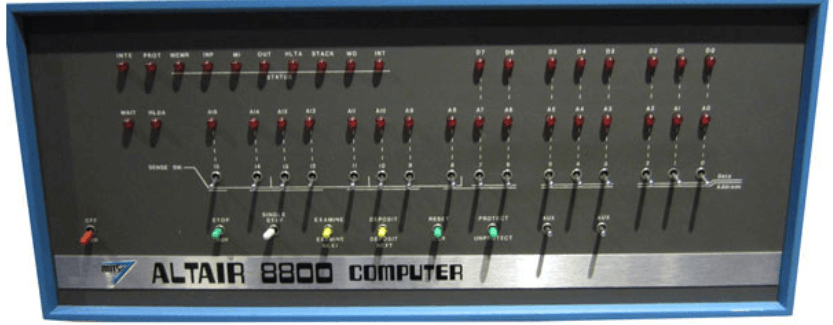
In 1973, the first microcomputer, the Micral computer, was introduced by André Truong Trong Thi, a Vietnamese-French engineer, along with Francois Grenelle, which was considered the first microcomputer. It used the Intel 8008 processor, and its initially cost was $1,750.
The first laptop or portable computer
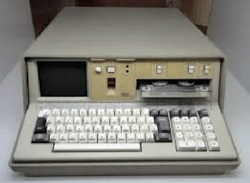
In September 1975, the first portable computer, IBM 5100, was introduced with included a 1.9 MHz PALM processor, a five-inch CRT display, a tape drive, 64 KB of RAM, and its weighted 55-pounds.
In April 1981, a computer Osborne I, was introduced by Adam Osborne, which is considered to be the first portable computer or laptop. The computer was designed with essential features that offer benefit to users, such as two 5 1/4" floppy drives, a 5-inch display, 64 KB of memory, ran the CP/M 2.2 operating system. Furthermore, the cost of this computer was $1,795 and weighed 24.5-pounds.
Later in 1984, the IBM portable was introduced by IBM PCD (PC Division) that included 30-pounds weight, and it was the first portable computer. In 1986, the PC Convertible computer was announced by the IBM PCD that was its first laptop computer, which included 12-pounds weight. Finally, the first notebook with an integrated CD-ROM, the IBM ThinkPad 775CD computer was introduced by IBM in 1994.
The concept of first Apple computer
Apple introduced its first Apple computer, Apple I (Apple 1) that was sold for $666.66. In 1976, Steve Wozniak developed the computer kit, and the computer had 4 kb of memory and a 6502 8-bit processor. The size of memory could be expanded to 8 or 48 KB by using expansion cards. Still, a display, power supply, keyboard, and case to be operational is needed by a kit, although Apple 1 contained a fully assembled circuit board.
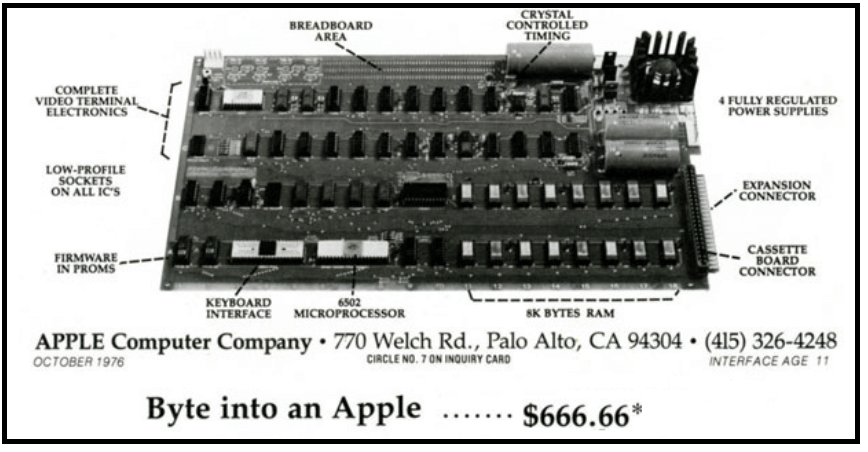
The first IBM personal computer
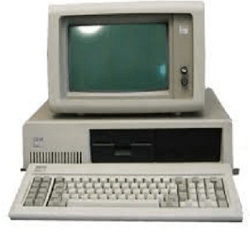
In 1981, the IBM PC was released by IBM, which was its first computer. Its code-name was Acorn, and it used MS-DOS. It included features such as 16 KB of memory (Expandable to 256 KB), an 8088 processor.
Later, in March 1983, the first PC clone, Compaq Portable was introduced. A sit was developed by IBM; so, it was able to run any software developed for IBM computers and fully compatible with IBM computers.
The first multimedia computer
In 1992, Tandy Radio Shack introduced the M2500 XL/2 and M4020 SX. These were the first computers released with feature the MPC standard.
The MPC stands for Multimedia Personal Computer that was developed in 1990. It has the ability to execute programs, which connect video, audio, animation, and graphics. In 1992, Radio Shack introduced the first personal computers that support MPC specification. Nowadays, all modern computers that provide the facility of multimedia, they all are MPC compliant. The three types of MPC standards are available: MPC, MPC2, and MPC3. The requirements of MPC2 and MPC3 are described below:
Requirements of MPC 2
- 4 MB of RAM
- VGA Display.
- Intel 486SX 25 MHz processor
- 2x CD-ROM drive
Requirements of MPC 3
- 8 MB RAM.
- MPEG Support.
- A processor of Intel Pentium 75 MHz
- 4X CD-ROM drive.
- Hard Drive of 540 MB
The first computer by another computer company
- Toshiba: The TAC digital computer was the first computer released by Toshiba in 1954.
- Hewlett Packard: The HP-2115, its first computer, was introduced in 1966.
- Dell: The Turbo PC was the first computer released by Dell in 1985.
- Compaq: The Compaq Portable was released in March 1983. It was the first computer introduced by Compaq and a fully IBM-compatible computer.
- Commodore: The Commodore PET was the first computer of Commodore that was released in 1977.
- NEC: The NEAC 1101 was the first computer released by NEC in 1958.


